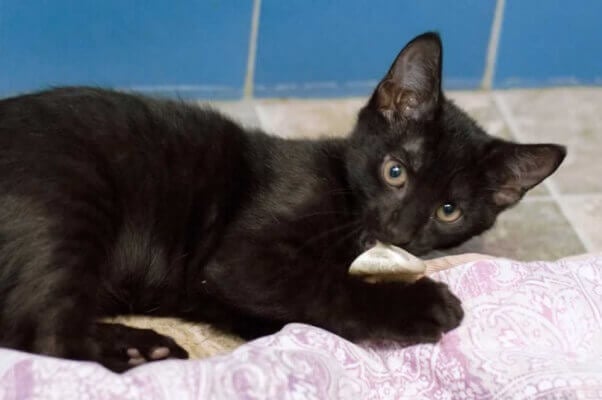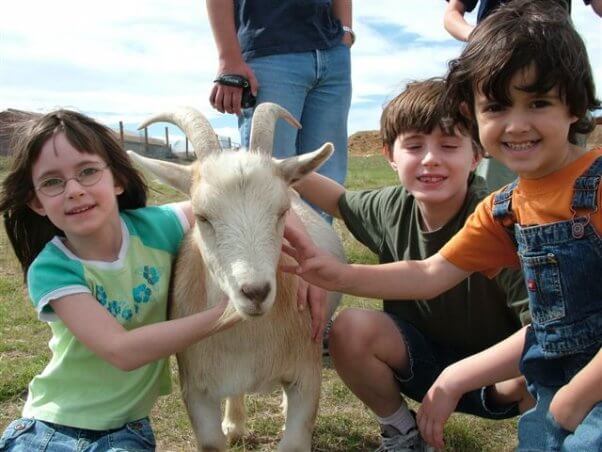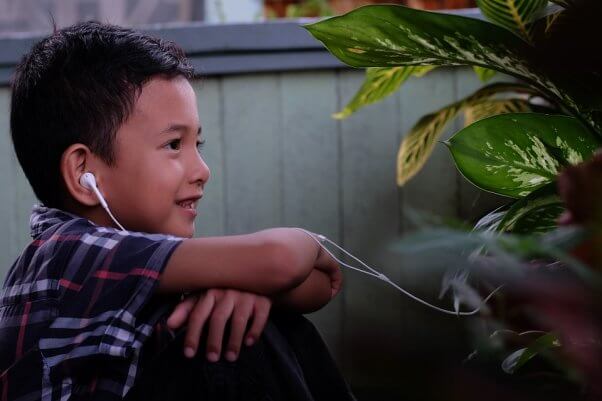How to Teach About Animals and Responsibility Without Class ‘Pets’
Keeping classroom “pets” is a bad idea—neglect (intentional or not) and abuse is widespread, animals can trigger students’ allergies and asthma, and let’s face it: A classroom simply cannot be a proper home for an animal and can’t allow their needs to be met. Your busy, bustling, brightly lit learning zone is absolutely wonderful for the couple dozen or so little ones in your care all day, but for a sensitive animal trapped in a cage or tank? Not so much.
Thankfully, keeping an animal in your classroom is also very unnecessary, as there are countless fun, creative, and interesting ways to teach your students about responsibility, companion-animal care, the life cycle, and animal science that won’t put the well-being of anyone at stake.
Do right by animals, and set a positive example for your students. Say no to classroom “pets” and check out some of these fun alternative ideas instead:
Real-Life Connections
There are so many animals out there who we can learn from—whether they’re the ones we care for and share our lives with at home or those living their lives freely in the wild or safely and peacefully at a sanctuary. Take opportunities to look to these animals for lessons and inspiration instead of forcing one to lead a subpar life in a classroom.
- Have companion-animal story time. Do you have an animal at home? If so, put together some fun photos and videos of your animal companion to share with the class. Each day or week, share a different photo or video along with an anecdote showing the class how the animal is doing or what he or she enjoys or just a funny or emotional story about your companion. If you’d like to, open up this activity to the whole class. Each week, you can have a different student bring in a photo or video of their animal companion (or the companion of a family member or friend, if they don’t have one at home) and fill out a questionnaire about the animal that they’ll share with the class. This is a fun way to teach kids about companion-animal care (by discussing what each kind of animal needs) as well as to show that each animal has a unique personality and foster appreciation for all animals.

- “Adopt” an animal for your classroom. Some accredited animal sanctuaries have programs in which people can financially sponsor one of the rescued animals in their care. Have your class raise money to sponsor a rescued animal. Most sanctuaries provide you with a photo and information about the animal you’ve helped support, which you can display in your classroom. Many will provide you with updates about the animal, especially if you tell them that you’re sponsoring the animal as a class and would like to incorporate the updates into ongoing discussions. Check out the “Adopt a Farm Animal” Program at Farm Sanctuary or look into similar programs at other accredited sanctuaries. While TeachKind cannot vouch for any facility that we’ve not visited ourselves, this list of accredited sanctuaries is a good reference.

- Live stream your favorite animals. There are many wonderful wild-animal “live cams” available to stream for free right from your classroom. Teach your students about different animals, their habitats, and their needs by designating a few minutes each week or each day to check in on some of your classroom’s favorite streams. Alternately, you can regularly have one playing in the background during quiet work time for students. It’s exciting to see animals living freely in their own homes without human interference or in a high-quality sanctuary where rescued animals can live the rest of their lives peacefully and in as natural a setting as possible.
Plants
Plants and animals share many characteristics—we all need water, grow, and eventually die. But one thing that we don’t share is the ability to feel happiness, joy, pain, or fear—that’s strictly an animal trait. Plants don’t have nervous systems, so if they’re neglected or not well taken care of, lessons can still be learned—but unlike with classroom “pets,” no one has to suffer. Plants, please! 🙂
- Plant seeds. Want to teach students about the cycle of life or the responsibility involved in caring for another living being? There’s no need to put a sentient being’s life and well-being at risk. Instead, have your students plant their own seeds, care for them, and watch them sprout. There are countless free activities available online that correspond with a seed-planting project, and it allows students to see the direct results of the care, time, and effort that they put into caring for their plants.
- Have class plants, not class “pets.” If you’d like to incorporate something more long-term into your classroom, get plants instead of “pets.” Choose an interesting-looking and hardy plant that can thrive in your room’s sunlight, temperature, and air conditions. You can even name the plant in order to personify it, if you’d like. Each week, designate a different student the plant’s caretaker—meaning that he or she handles the responsibilities of watering/misting the plant, slightly rotating it so that it gets even sunlight, and giving it a trim or refilling low soil (or any other maintenance your plant of choice requires) as needed. You can also have each week’s caretaker snap a photo of the plant, which you can archive for the class so that you can all look back on its growth and changes throughout the school year.

- Plant a school garden. Does your school have gardening space available—or perhaps just a space where you could use some of your teacher DIY magic to create one? Gardening is a great way to teach students to care for a living being and give them the experience of watching something grow under their care. While it’s wrong to use animals—who are feeling, sentient beings—for this or any other purpose, plants are a great tool for teaching these lessons to students of all ages. Check out some of the many brilliant school gardening ideas on Pinterest, then get one started on your own campus.

Virtual Pets
Like it or not, we’re living in the virtual age—most kids are smartphone- or tablet-literate before they can read. A perk of this is that there are countless wonderful apps and online programs that allow kids to take care of virtual animals or mystical creatures. Many include educational games and require kids to provide regular care in order to keep the virtual animal alive and well. Here are some of our favorite apps and websites (no real animals necessary).
- There are countless fun and free apps for virtually any device that teach students about animal care and responsibility. Here are just a few:
- My Virtual Pet (iOS and Android)
- Puppy Dog Sitter (iOS and Android)
- Egg Baby (iOS and Android)
- Fishdom (iOS and Android)
- There are also websites that allow kids to “adopt” a virtual pet for free—and in most cases, no software is necessary, as kids can care for their virtual pet right in the web browser. Note: Some programs allow students to “breed” animals, which is certainly problematic in the real world. If you come across this issue in your search for a virtual pet, use the opportunity to address the irresponsibility of breeding animals in our already-overpopulated world and the importance of spaying and neutering any real animal companions.
- Webkinz: Kids can adopt an animal in this magical world and play educational games, explore new environments, and, of course, feed and care for their virtual pet.
- AdoptMe: After adopting and naming their virtual animal, kids can explore the town, play with and care for their animal—and they can even blog about their experiences.
- FooPets: Designed by a veterinarian to be educational, this game allows kids to adopt realistic 3-D cats and dogs who they can feed, play with, and create comfortable homes for.
- Moshi Monsters: A fun game in which kids can adopt their own cute virtual monsters and play games, do puzzles, and go on adventures together.
Toys
Every kid loves toys—and many toys can be used to teach responsibility and companion-animal care. Check out some of these fun, interactive toys that would be the perfect addition to your classroom. Kids will jump at the opportunity for some reward time with these fun virtual friends.
- Stuffed animals: Having young students care for a classroom stuffed animal can be lots of fun, and you’ll be surprised by how seriously they’ll take the responsibility of bringing home and caring for the pet stuffed animal for the night.
- If you want to take it up a notch, Build-A-Bear’s Promise Pets collection features adorable stuffed toys that come with customizable accessories and sound packages (so they can make animal sounds, sing songs, or speak). Each Promise Pet comes with an app that can be used to care for the stuffed animal and keep it “healthy” through fun, educational games that teach children about companion-animal care. Give one student per week “Promise Pet” duty, and leave them in charge of daily check-ins on the app.
- Robotic animals: There are so many robotic toy animals available that will move and interact with kids in real life. These are commonly used in families who cannot have animal companions—and they’re perfect in a classroom, where no animal should be forced to live.
- furReal Pets has a wide selection of stuffed animals that react to stimuli and can make sounds—and it even has some options that allow kids to write their own code for the toy’s functions.
- CHiP is described as “an intelligent, affectionate robot dog,” and his personality changes based on the way in which he’s treated and responded to. He can play fetch with his smart ball, recognize faces, and more.
- Furby Connect is a new take on the classic interactive Furby toy—updated for the current generation of kids.
- Little Live Pets are adorable, interactive “pets” who respond to touch and words and are able to be fed and snuggled. There are all different varieties, too.

Classroom Displays
There are plenty of eye-catching items that you can buy or create to display in your classroom that can easily achieve the same effect that a live animal would—but without putting any lives at risk.
- Virtual fish tank: There’s nothing beautiful about actual fish suffering in a too-small tank with no stimulation and insufficient oxygen—but if you want the calming visual effect without the cruelty, purchase an artificial, fish-free aquarium (like this one) to get the look for your classroom without putting lives at risk. https://www.youtube.com/watch?v=P-TRpyauZAk
- Butterflies in the classroom: Not real ones, of course! It’s cruel to purchase butterflies or larvae to use in school projects, so instead, keep a beautiful, lifelike mechanical butterfly, such as this one, in your classroom. We’re sure that your students will be transfixed. If you’re studying the life cycle, opt for a reusable plastic set instead of the real thing. https://www.youtube.com/watch?v=I8-hjldddHI
- A statement: Feeling passionate about the fact that animals aren’t ours to use? Find an old tank, cage, or other small animal enclosure and bring it into your classroom with a sign inside that explains why the cage or tank is empty—that animals don’t belong in the classroom, and that in your class, you encourage students to think of animals as individuals.
See? There are so many creative ways to captivate your students and teach them to appreciate and take responsibility for animals that don’t involve using them against their will.
Stay connected with TeachKind by signing up for our e-mail list. It’s free, and we’ll keep you going with a steady supply of humane classroom activities, lesson plans, contests, and more—all designed especially for compassionate teachers. Sign up now:
By submitting this form, you’re acknowledging that you have read and agree to our privacy policy and agree to receive e-mails from us.





